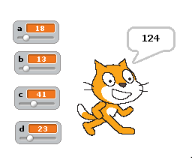In golf, the standard scratch of a course is calculated using this formula:
(3*num_of_3_par_holes + 4*num_of_4_par_holes + 5*num_of_5_par_holes) - difficulty_rating
Your task is to calculate the standard scratch of a golf course, given these 4 inputs.
You should take input in any standard form in the format
[num_of_3_pars, num_of_4_pars, num_of_5_pars], difficulty rating
but if it saves bytes, you many take input in a different way.
You should output the final result by any accepted method on meta, such as returning from a function.
Shortest code wins because this is code-golf!


 .
.